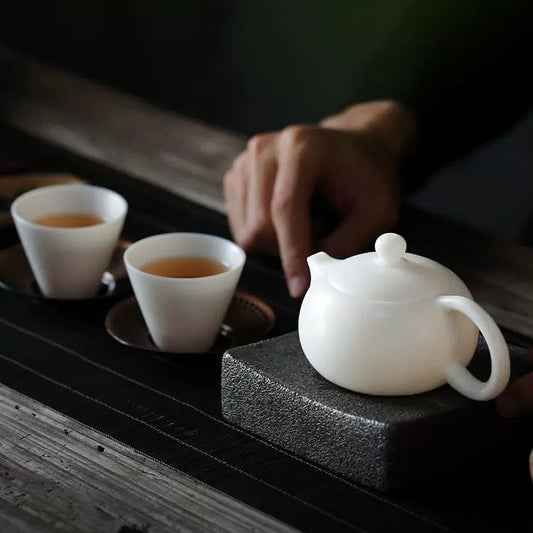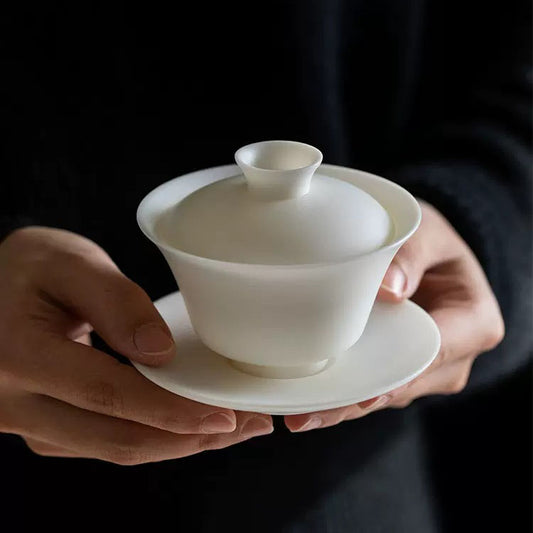Mutton fat jade porcelain teapots are an important component of traditional Chinese tea culture, and are highly sought after by tea enthusiasts and collectors for their delicate texture, durability, and good insulation performance. Among the many types of Mutton fat jade porcelain teapots, the following are the main types and the cultural connotations they represent.
The straight pot is the most common type of Mutton fat jade porcelain teapot. Its simple and smooth shape is easy to operate and clean. In terms of cultural connotations, the straight pot represents the simple and practical spirit of tea ceremony, as well as the aesthetic concept of "uprightness, balance, and harmony" in traditional Chinese culture.

The round pot is shaped like a sphere and is usually used to brew round or semi-round tea leaves, such as Pu-erh tea and Tie Guan Yin(tea types). The advantages of a round pot are even temperature and easy tea infusion, which makes it easy to control the brewing time and concentration. In terms of cultural connotations, the round pot represents the harmonious and inclusive spirit of tea ceremony, as well as the concept of "the sky is round and the earth is square" in traditional Chinese culture.

The flat pot is relatively flat and is usually used to brew flat-shaped tea leaves such as high-mountain tea and Huangshan Maofeng(tea types). The advantages of a flat pot are easy control of brewing time and mild tea flavor. In terms of cultural connotations, the flat pot represents the humbleand down-to-earth spirit of tea ceremony, as well as the concept of "virtue carries things" in traditional Chinese culture.

In summary, there are many types of Mutton fat jade porcelain teapots, each with its unique characteristics and applicable scope, representing different cultural connotations and values. Choosing a suitable Mutton fat jade porcelain teapot can not only improve the quality and taste of tea, but also allow us to appreciate the spirit of tea ceremony and the charm and connotation of traditional Chinese culture.





